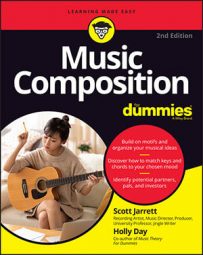The most interesting periods of music are those at the turning point from one accepted musical style to the next, such as the break from Baroque music to Classical music. These turning points are generally not recognized during the period itself; in fact, they're often dismissed as fads. With hindsight, it's much easier to tell which composers and what periods of music ended up making the greatest impact on the course of Western music.
The beginning of the 20th century was one of these turning points, when composers began rethinking the tonality, structure, rhythm, form, purpose, and even audience of their music.
Avant garde (1910–1950)
The period from 1910 to 1950 is the true bridge between classical music and what became known as the avant garde. In Austria, Arnold Schoenberg (1874–1951) experimented by using the 12-tone scale in his music (as opposed to the 8-tone system considered "normal"), creating some truly disturbing and dark pieces perfectly fit for future horror films. In Hungary, Béla Bartók (1881–1945) drew heavily on the dying folk music of his countrymen to create beautifully foreboding pieces for both orchestra and solo piano.
Meanwhile, in the United States, Charles Ives (1874–1954) mixed complex harmonies, rhythms, and tonalities with early American hymns and folk music, leading to his eventual winning of the Pulitzer Prize for Music, for Symphony No. 3. His countryman John Cage (1912–1992) laid some of the groundwork for future minimalists, requiring audiences to listen to his recorded works via dozens of radios and record players playing simultaneously — almost overnight making the United States the birthplace of experimental music.
This period of music is especially notable for the desperation of composers to really speak to audiences in a time of worldwide turbulence (the two World Wars). Much of the music of this time was drawn directly from native traditional music in an attempt to connect with the "common man," as opposed to previous generations of composers, who admittedly tried to attract the attention of the well-heeled genteel classes.
Minimalism (1950–present)
Much to the chagrin of composer Steve Reich (b. 1936), his work has been lumped together with that of Philip Glass (b. 1937), Terry Riley (b. 1935), John Adams (b. 1947), and Arvo Pärt (b. 1935) as minimalism.
Minimalist music springs from the exploratory work started by John Cage and is a genre concerned with finding the absolute right note or rhythm for a piece of music. Philip Glass's work is built around complex rhythms and early use of the synthesizer. In the 1970s, Arvo Pärt put Estonia on the musical map by introducing a new style of composition he called tintinnabuli, based on a two-part homophonic texture that is breathtaking in its incredible sparseness. In the 1960s, Steve Reich was one of the first to work tape loops into his rhythm-oriented compositions. John Adams, well-known for his minimalist opera Nixon in China, won the Pulitzer Prize for Music in 2003 for On the Transmigration of Souls, a complex piece begun soon after the terrorist bombings of September 11, 2001.

